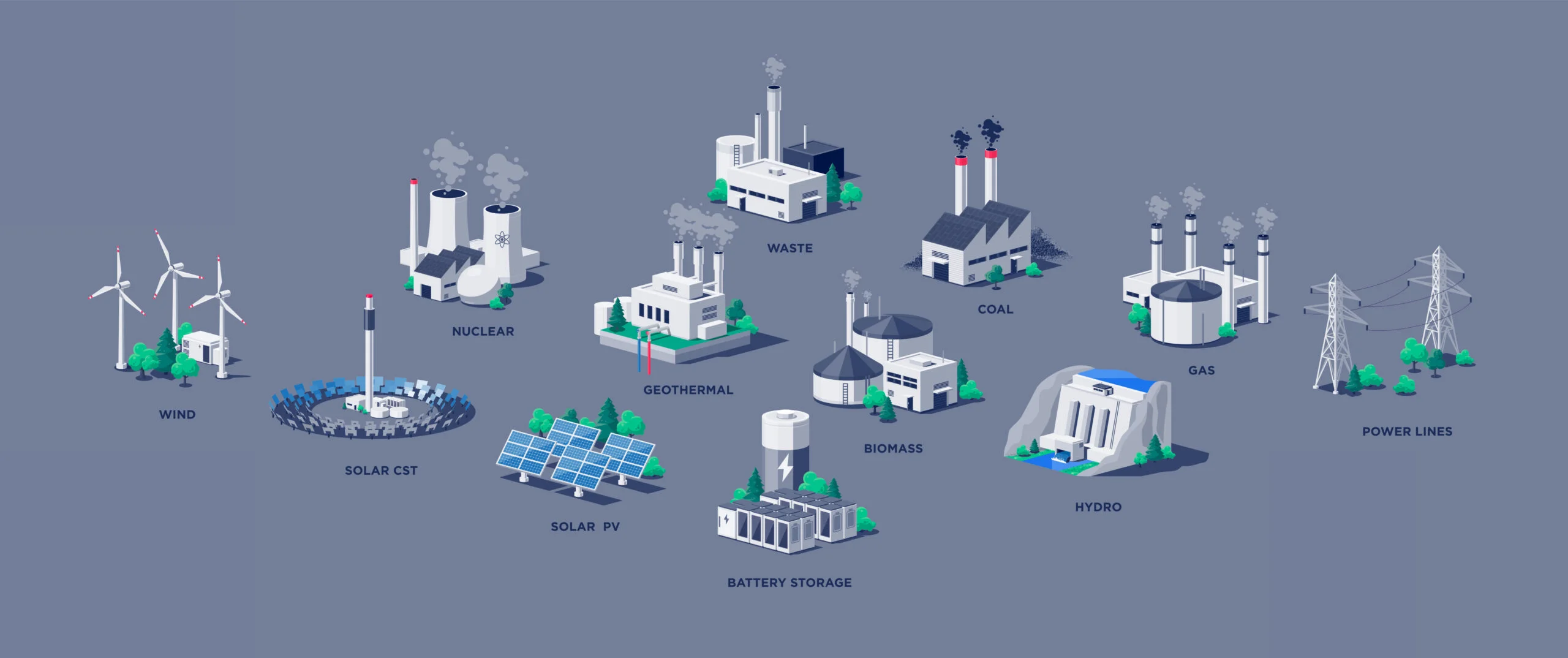The distributed energy resource (DER) market is expected to double by 2027. Between the dual challenges of global decarbonization and electrification efforts and the existential threat of climate change, these increased DER assets afford opportunities to utilities stressed to meet demand. Through the use of a distributed energy resource management system (DERMS), utilities can aggregate DER assets to shift load to meet demand and better manage the time-of-use costs associated with energy purchases during peak periods of usage. With cooler months approaching, these DER assets have proven effective in winter demand response programs, which employ Grid-Edge DERMS to shift load to offset peak energy costs, while enhancing grid resiliency.
The Elephant in the Room: Climate Change & Demand Response
Every year in the last decade was successively the hottest temperatures ever recorded, temperature extremes are driven by climate change. So what does this have to do with winter demand response? Once identified as “global warming,” climate change succinctly identifies not just temperature increases, but shifts in weather patterns including erratic extreme weather events and unseasonable cold snaps. Altogether, climate change presents an existential threat to grid resiliency through both the increased demand needed for heating and cooling and damages caused to infrastructure. While demand response has historically been deployed during summer months, changes to weather patterns have shown that winter demand response is an equally effective load management strategy.
Types of DERMS
Simply put, distributed energy resource management systems (DERMS) are designed to manage distributed energy resources (DERs) like solar, battery, electric vehicles and EVSE, and smart home devices like thermostats and water heaters. The difference in DERMS centers around the DER assets they control, which break down as:
- Grid DERMS – This distributed energy resource management system (DERMS) is used to manage utility-held DER assets like solar or battery installations.
- Grid-Edge DERMS – By contrast, a Grid-Edge DERMS is a software solution that manages behind-the-meter DER assets at the edge of the grid.
So far, utilities have relied on Grid DERMS to ensure that demand is met where and when needed; utility-owned DER assets are both uniform and designed to satisfy demand in bulk. Conversely, behind-the-meter DER assets have proven too unpredictable for grid operators, and as such have remained largely confined to residential demand flexibility programs like demand response, EV managed charging, or virtual power plants.
With Topline Demand Control, an innovative combination of Grid-Edge DERMS platforms, AI, forecasting software, and model predictive control, grid operators can now rely equally on behind-the-meter DERs to yield what they want on command. Topline Demand Control optimizes DERs resulting in a reliable outcome based on customer requests: if a grid operator requests X during a grid event, Topline Demand Control will solve for that through optimization to reliably provide the requested results.
When coupled with Topline Demand Control, Grid-Edge DERMS serves as the perfect complement to Grid DERMS assets by employing both the utility-held and behind-the-meter assets available within a utility service area. Let’s look at how a Grid-Edge DERMS can help manage peaks through winter demand response and beyond.
Demand Response
For more than four decades, demand response—a concerted conservation strategy—has helped utilities shift load to correspond with peak periods of demand. Initially using one, then two-way radio switches for device control, the expansion of broadband and WiFi-enabled smart devices has provided even more nuance for grid operators to manage demand. Through the use of a Grid-Edge DERMS to aggregate these devices, demand response programs are typically run during the hotter months of the year to offset usage.
With shifting weather patterns though, these demand response programs have proven effective during bitter cold snaps, especially in areas of the world unaccustomed to it. For example, having now faced several particularly erratic winters, Texas utilities have turned to demand response to successfully manage both the load curve and the high costs associated with peak energy purchases.
EV Managed Charging
Like demand response, EV managed charging is a conservation strategy that utilities can employ to shift load during peak periods of consumption. While electric vehicle adoptions have slowed some over time, the future is inevitably a fully electrified fleet. Electric vehicles charge at erratic hours, which means a shifting load curve while further encumbering the grid. Research indicates that electric vehicles may be charged more frequently at a lower state of charge (SOC) during the winter months, adding an even greater dimensionality to the necessity for EV managed charging. Fortunately Grid-Edge DERMS can access this expanding fleet of EVs in any service territory through concerted conservation tactics. Through EV managed charging or vehicle-to-grid (V2G) charging functionality, utilities can enhance grid resiliency and defray high peak energy costs.
Battery Programs
Analysts anticipate that U.S. battery storage capacity is expected to double in 2024. In fact, Virtual Peaker’s home state of Kentucky is part of the so-named Battery Belt, with an enormous battery plant just 45 minutes or less to the south of Louisville. This increase in battery production is necessary for grid stability as a resource for load flexibility.
At scale, battery installations are often managed by a Grid DERMS. For behind-the-meter batter access, utilities with Grid-Edge DERMS can access these emerging resources. Using Topline Demand Control, utilities can optimize these resources to guarantee outcomes specified by grid operators. Batteries have proven so useful for winter peaking, that Green Mountain Power is actively working to ensure that all customers have access to battery storage.
Winter Demand Response, VPPs, & Grid-Edge DERMS Conclusion
As we’ve noted, demand response is for all seasons. That means that the Grid-Edge DERMS already used to manage the resources in your community are available year-round. For grid operators, this means an affordable non-wires alternative energy source, as well as the opportunity to shift usage to manage coincident peaks—energy arbitrage—to decrease the overall average cost of energy demand at the market level. Getting prepared today is essential to staying ahead tomorrow. The good news: with the right Grid-Edge DERMS you can prepare for all seasons right now. What’s stopping you?





